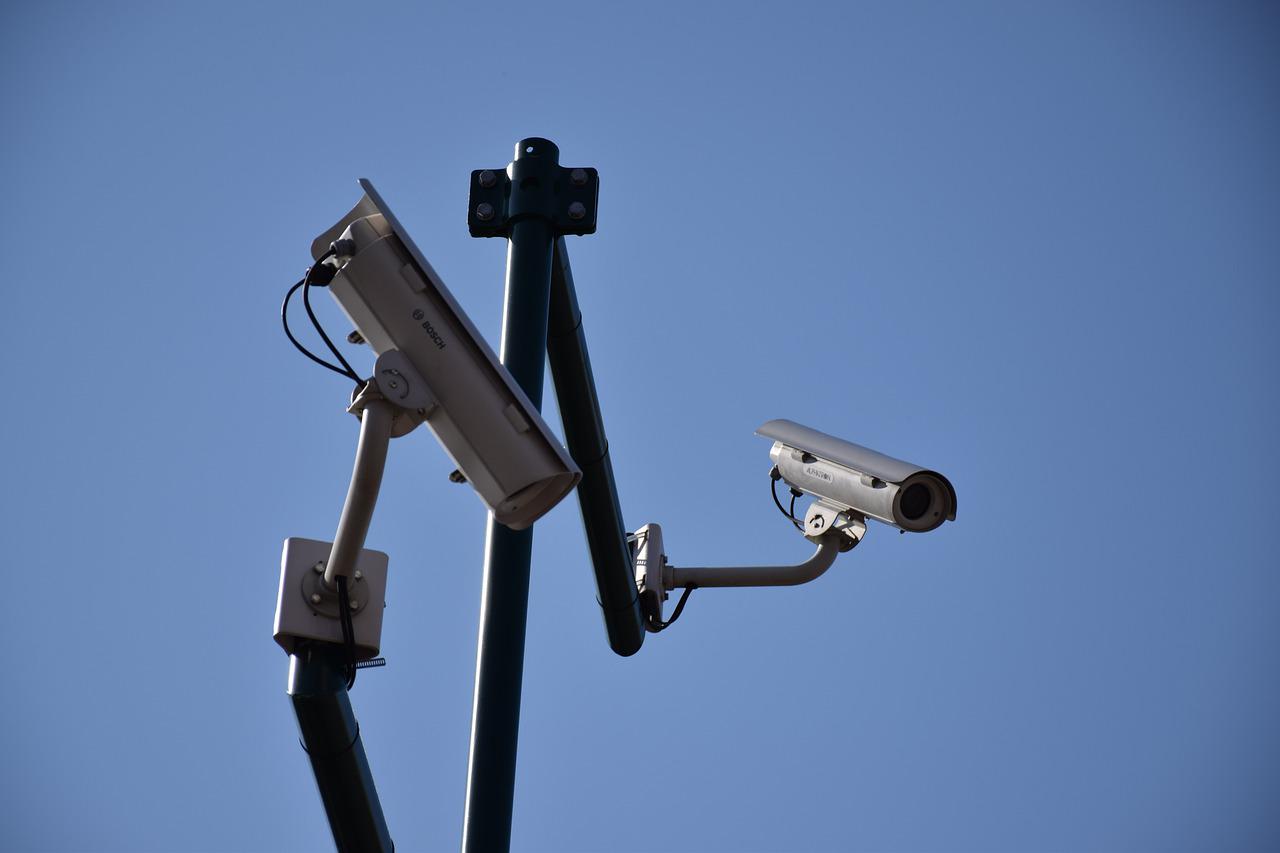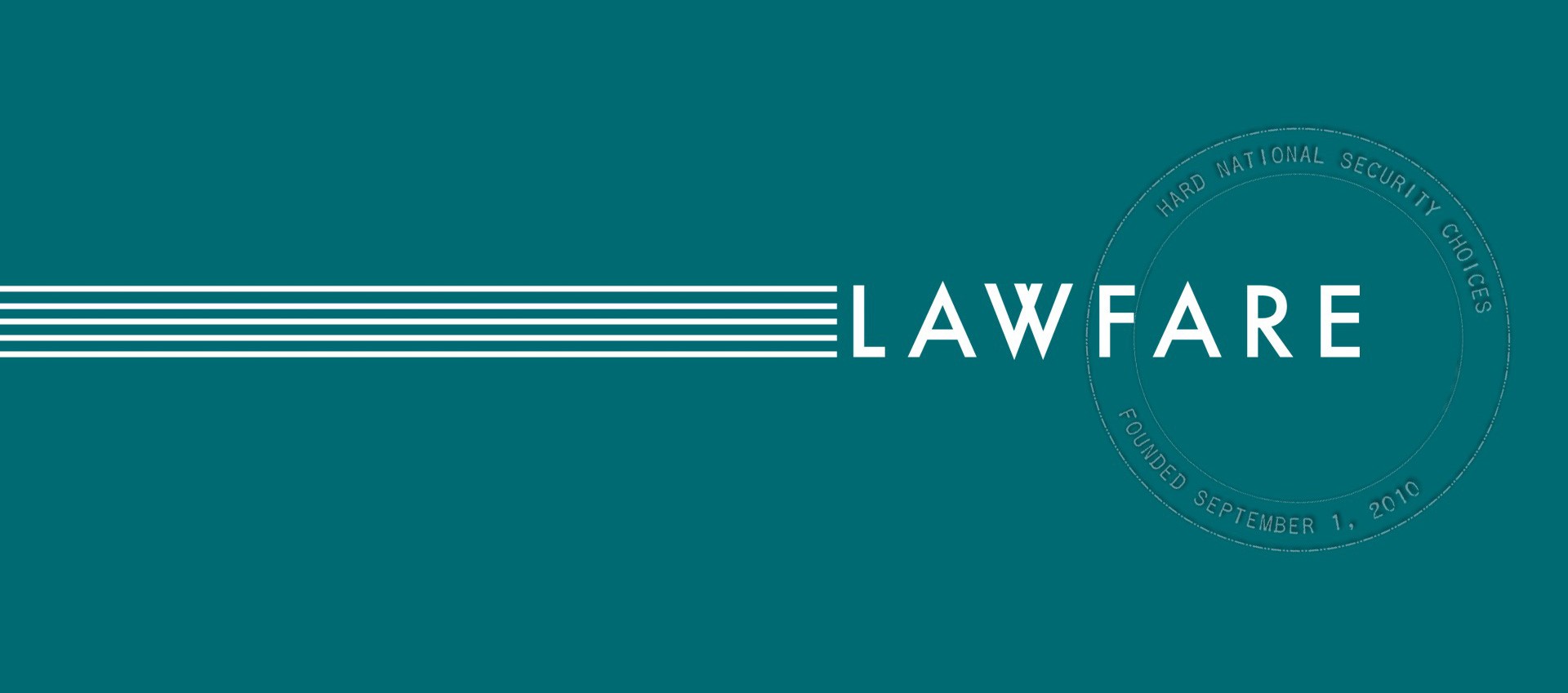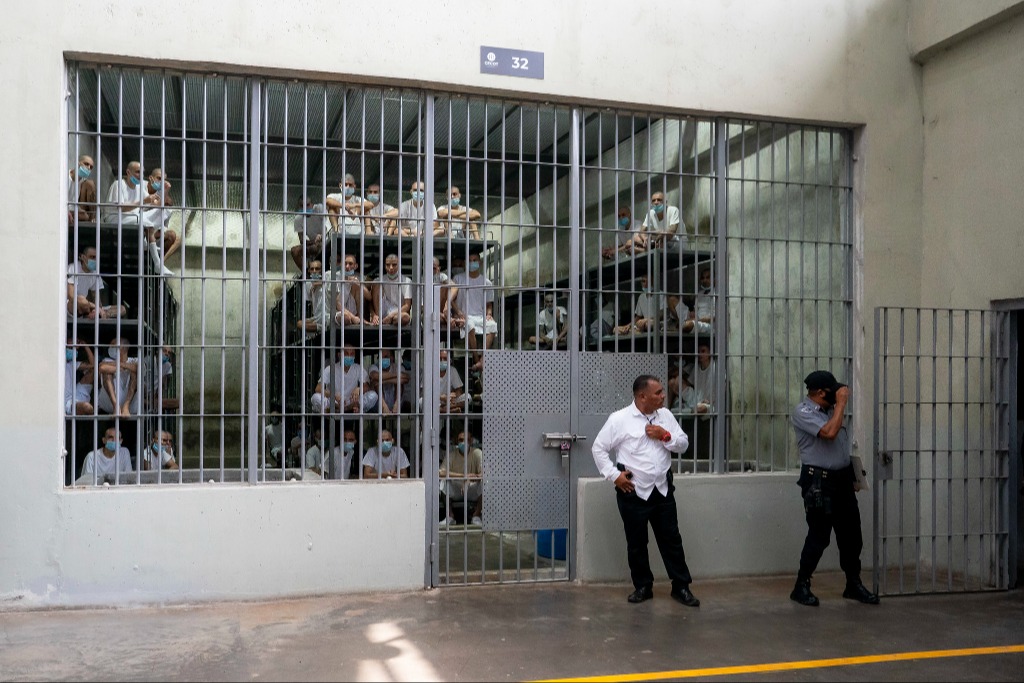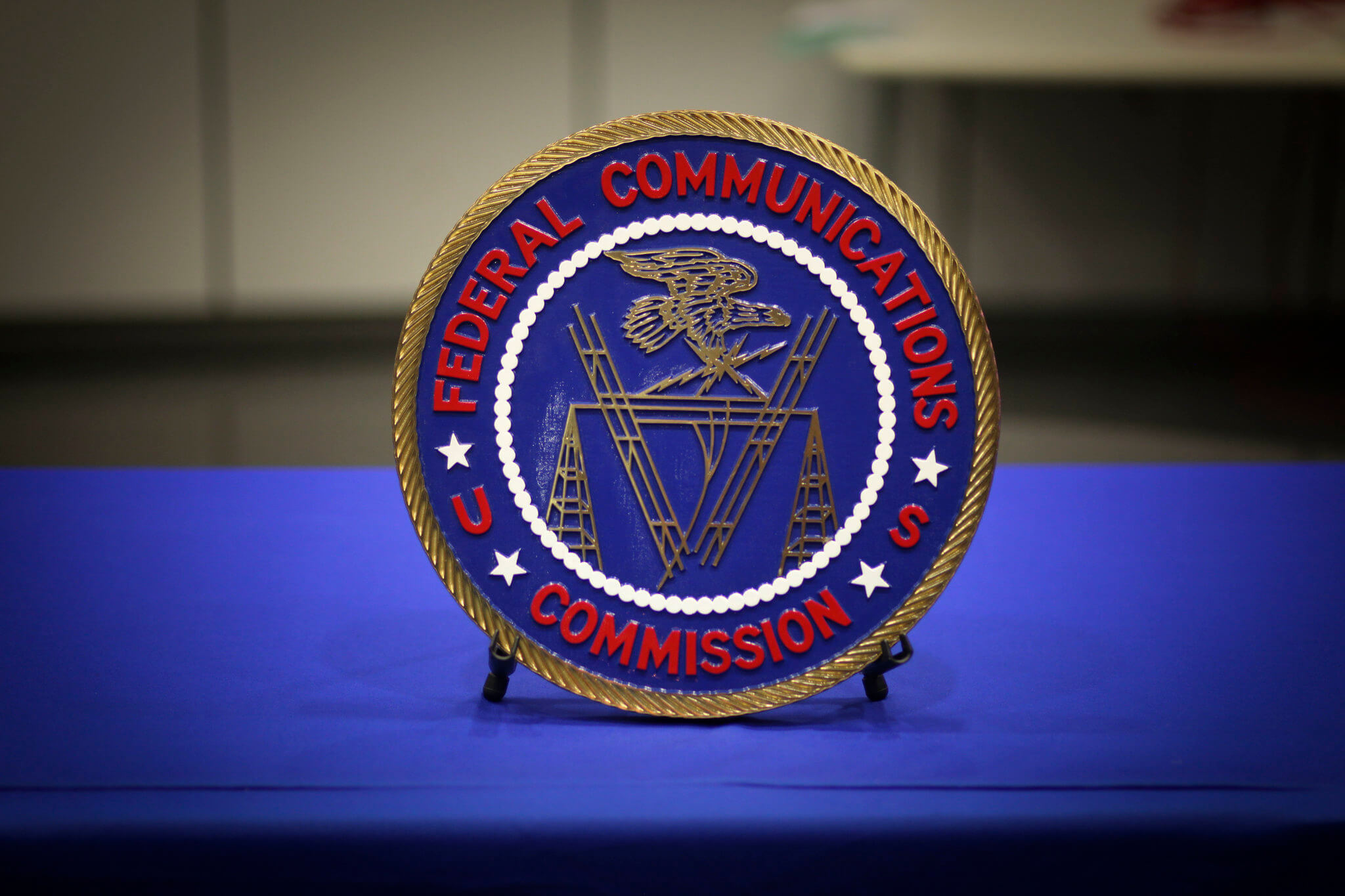A First Circuit Decision and the Future of Telephone Pole Camera Surveillance
Courts are split on whether telephone pole camera surveillance of a house violates the Fourth Amendment, and the First Circuit just added to the confusion.

Published by The Lawfare Institute
in Cooperation With

Bureau of Alcohol, Tobacco, Firearms, and Explosives (ATF) agents suspected that Nia Moore-Bush was involved in illegal drug and firearm sales. So, without obtaining a warrant, they mounted a sophisticated camera on a telephone pole and surveilled her Massachusetts home for eight months in 2017. The camera recorded the front part of Moore-Bush’s house and yard and her full driveway, day and night. It could zoom in to capture facial expressions, small objects in a person’s hands, details on clothing, license plates, and more. Over the course of eight months, it captured her comings, goings, guests, and activities in the front curtilage of the residence, which ranged from the mundane to the personal to the potentially incriminating. And ultimately, it helped law enforcement make their arrest.
Moore-Bush’s motion to suppress this evidence following her arrest was granted by a federal district court and then denied by a panel from the U.S. Court of Appeals for the First Circuit. The First Circuit took the case en banc—and wound up splitting three votes to three on whether eight months of pole camera surveillance is a violation of one’s Fourth Amendment right to protection against unreasonable search. The judges wrote dueling opinions that take up a whopping 129 pages in total.
Given the growing confusion in the lower courts, a Supreme Court case on the issue seems increasingly inevitable. The legality of long-term pole camera surveillance remains ambiguous. But Moore-Bush is an important case with important implications for the issue.
Chief Judge David Barron and Judges O. Rogeriee Thompson and William Kayatta ruled in favor of a warrant requirement for pole cameras. The judges argue that the ATF’s use of the pole camera for eight months was a search under the Fourth Amendment, requiring a warrant. Their primary argument is based on the recent Supreme Court case Carpenter v. United States.
Carpenter held that individuals can retain Fourth Amendment rights in information they disclose to a third party, at least in some contexts. In the case, cell phone users retained Fourth Amendment rights in their cell phone location data, even though that data was exposed to their cell phone companies. This was a potentially revolutionary holding that may extend Fourth Amendment protection to a variety of digital data.
The Barron opinion argues that Carpenter plainly applies to the issue of pole camera surveillance. Echoing my forthcoming essay in the Illinois Law Review, the opinion concludes that “Carpenter, by its own terms, is not limited to situations in which the third-party doctrine is in play.” That is, Carpenter and its factors can be used to resolve Fourth Amendment questions involving either data held by third parties or data collected directly by the government. Carpenter did, after all, state that its holding would apply equally if the government were to “employ[] its own surveillance technology” to collect “a record of [Carpenter’s] physical movements.”
Having determined that Carpenter bears on the issue, the Barron opinion applies several of the factors discussed in Carpenter in the manner of a doctrinal test—what I have termed “the Carpenter test.” This test typically involves three factors: the revealing nature of the data collected, the amount of data collected, and whether the data was voluntarily revealed to another party.
The Barron opinion addresses each of these factors repeatedly and in detail. It discusses the revealing nature of the pole camera footage. The opinion argues that the footage collected can provide an “intimate window” into the target’s life by recording everything that occurred in her front curtilage in vivid detail for several months. The opinion also addressed the voluminous amount of data collected over eight months, which encompasses “all that was visible in the curtilage of the home over a substantial period” and is remarkable in its “depth, breadth, and comprehensive reach.” It then reasoned that homeowners generally cannot prevent the exposure of their activities to pole camera surveillance: Such surveillance is clandestine, fences are often illegal or prohibitively expensive to construct, and in any event, fences can easily be circumvented by a pole camera. Accordingly, people do not really voluntarily disclose their activities to a pole camera’s gaze. They have no choice. The opinion also addresses another, less commonly discussed Carpenter factor: the cost of the surveillance. It describes at length pole cameras’ low cost and increased risk to privacy relative to in-person stakeouts, which would be prohibitively expensive for months-long surveillance. The opinion then concludes its lengthy merits discussion by reemphasizing that the Carpenter opinion established “the principles that we rely on to find that the use of digital [camera] surveillance is a search under the Fourth Amendment.”
The Barron opinion raises other arguments as well. It notes that prior tort cases have addressed the situation in which a nosy neighbor video records a person with a video camera. Such behavior is “patently unreasonable,” the judges find, and would likely make the perpetrator liable for a privacy tort.
The Barron opinion also downplays concerns about the difficulty of drawing a line between short- and long-duration surveillance. The judges point out that courts encounter similar line-drawing issues in numerous other areas. For example, short-duration police stops are constitutional with less than probable cause, under Terry v. Ohio, but long-duration stops are not. Likewise, short-duration detention following a warrantless arrest is constitutional, but long-duration detention following a warrantless arrest is in most cases unconstitutional. The court lists several other examples.
The judges also sketch out a policy-based argument about the consequences of leaving pole camera surveillance entirely unregulated under the Constitution. They note that the opposing judges’ approach would allow the government to obtain “continuous video footage of every home in a neighborhood, or for that matter, in the United States as a whole.” They emphasize the special protections traditionally afforded to the home under Fourth Amendment law. And they address the likely chilling effects on associational and expressive freedoms of permitting the government to pervasively monitor its citizens’ homes.
Judges Sandra Lynch, Jeffrey Howard, and Gustavo Gelpí ruled against a warrant requirement for pole cameras. They argue that Carpenter doesn’t control the pole camera issue, because that opinion noted that it didn’t apply to “conventional surveillance techniques and tools, such as security cameras.” They contend that pole cameras—although not exactly security cameras—have been around long enough to be considered conventional. In any event, the judges assert, Carpenter does not directly compel finding a search here, and the Lynch opinion upholds a prior First Circuit panel decision from 2009 permitting the warrantless use of pole cameras.
The main substantive argument of the Lynch opinion is that people lack a reasonable expectation of privacy in the curtilage of their home because they should expect to be observed by their neighbors over time. Their neighbors often come to know the patterns of when they leave in the morning and return in the evening, among their other behaviors and typical activities. A neighbor might even create a record of sorts about another neighbor that is similar to that created by an always-on digital camera. The Lynch opinion imagines that the neighbor is a “retiree who has lived across the street for years and monitors activity seen from her windows and may … even record her observations.”
The Lynch opinion also discusses the cost of pole cameras. It notes that they are not “cost-free” and are more expensive than simply subpoenaing a cell phone company for location records. But contrary to the Barron opinion, the judges propose that the cost of such surveillance is actually a point in its favor, arguing that the government will not abuse pole camera technology by using it when it isn’t producing solid evidence. They claim that a camera is used only as long as it produces such evidence, and “[i]f the camera does not provide [incriminating] information, it is removed.”
The First Circuit’s analysis is colored by its prior panel decision favoring warrantless pole camera surveillance. But when considered as a matter of first impression—is eight months of video surveillance of a home a Fourth Amendment search? The answer is yes.
To be sure, courts might reach a variety of conclusions under the vague standard of the Katz test, which bases the Fourth Amendment’s scope on “reasonable expectations of privacy.” No one expects to be observed and videotaped every time they leave their house or enter their porch, yard, or driveway. This expectation is a reasonable one as a matter of probability. While a passerby or neighbor might occasionally look at another neighbor’s yard, it is extremely improbable that anyone would observe it for an entire day—let alone for several months or years. But individual activities in one’s yard and driveway, while not actually observed or recorded by others in the aggregate, are in theory exposed to public view. Publicly exposed activities traditionally received little protection in Fourth Amendment case law, at least prior to Carpenter. On this account, any expectation of privacy that an individual has in their yard is not reasonable. As with almost any novel Fourth Amendment question, Katz’s guidance is ambiguous.
The Lynch opinion’s arguments regarding nosy neighbors or the impossibility of police abuse of surveillance technologies are flimsy. The judges envision the standard neighbor as a sort of super-spy, vigilantly recording other neighbors’ every move. Yet a neighbor nosy enough to regularly monitor a person and create a detailed record of their movements and activities is likely to be very rare. And even the most obsessed neighbor could not produce the detailed, constant record made possible by pole cameras. Neighbors typically leave the house, sleep, eat, are visible to others, cannot see in the dark, and so on, and thus differ substantially from pole cameras. And regardless of these physical limitations, it is the typical neighbor—not the extreme outlier—who should provide the basis for assessments of reasonable expectations of privacy.
The Lynch opinion’s discussion of the potential for police abuse is even less convincing. One of the core functions of the Fourth Amendment is to prevent the overzealous or corrupt use of government investigative powers. Government agents have repeatedly abused, and continue to abuse, surveillance powers for political and personal gain. Yet the Lynch opinion apparently cannot imagine such things occurring. If the premise of the opinion is that Fourth Amendment restrictions on surveillance are unnecessary because the government will never abuse powerful surveillance technologies, that premise is dangerously wrong. And while the nonzero cost of pole camera surveillance may impose some constraints on its use, its cost is still very low relative to traditional forms of visual surveillance. A brand-new, high-end camera might cost roughly $5,000, but a cheaper camera can cost $200 or less. Police departments can also reuse existing cameras. Installation might cost another $600 if done by an outside contractor, and operational costs would be minimal after that. The cost-per-day of pole camera surveillance drops sharply over time and becomes drastically less than the cost of in-person surveillance for periods of longer than a week. Pole cameras, no less than license plate reader cameras or CCTV cameras, are capable of widespread use and potential abuse.
Nonetheless, the ambiguity of Katz leaves room for courts to declare that activities that in theory may be observed by others are not protected by the Fourth Amendment, even if the aggregate of such activities over several months would never actually be observed by another. The U.S. Court of Appeals for the Seventh Circuit recently made such an argument in United States v. Tuggle—a decision that also considered extensive pole camera surveillance—and the Lynch opinion briefly mentions the point before moving on to its super-spy-neighbor argument. But these arguments fail under an analysis that applies the principles of Carpenter (and its predecessor cases United States v. Jones and Riley v. California).
As the Barron opinion notes, several of the Carpenter factors point to the holding that long-term pole camera surveillance is a search. The amount of data collected by eight months of video surveillance is truly massive—roughly 357,000 minutes of digital video footage. As discussed in Carpenter, such large amounts of data increase the potential for invasions of the target’s privacy, and allow the government to learn about more and more aspects of a target’s life. Such data is also deeply revealing. Video surveillance creates a precise visual record of every activity in a yard or other curtilage: Every time any resident leaves or returns to the home; every visitor who enters the home and exactly when they arrive and leave; the license plate numbers of their cars; and every package, bag, or other item that enters or leaves the house. Pole cameras are also far less costly than in-person surveillance, especially for periods of longer than a week. When the government is able to capture large amounts of data at low cost, the potential for large-scale surveillance raises concerns about individual liberty and government power. As for voluntary disclosure, whether activities conducted in the curtilage of a home are voluntarily disclosed to others is an ambiguous inquiry that may depend heavily on the facts of each case (Is the resident a renter or an owner? Can they afford to build a new fence? and so on). But every other factor indicates that long-term pole camera surveillance is a search. Courts applying Carpenter’s principles should reach the same conclusion as Judges Barron, Thompson, and Kayatta: The police must obtain a warrant before video surveilling a person’s home for several months.
Given the growing confusion in the lower courts, a Supreme Court case on the issue seems increasingly inevitable. But the prospects for Supreme Court review of Moore-Bush itself seem unfavorable. The Court recently denied cert in Tuggle, and Moore-Bush doesn’t create a clean post-Carpenter circuit split with Tuggle. There are also “vehicle problems” with the case—that is, procedural complications that make it less desirable for a cert grant. The three judges who found a search here ultimately ruled in favor of the government on the basis of the good-faith exception, which allows the government to use evidence collected under existing legal authority even if that authority is later overturned. This wrinkle, plus the odd three-three split on the merits, would complicate the Court’s review and present a messy procedural posture. Most likely, the Court will await a subsequent federal case that creates a true split or another state supreme court case deepening the split between the Seventh Circuit and a handful of state supreme courts that have found pole camera surveillance to be a search.
Yet a pole camera case is still likely to reach the Supreme Court in the near future. It may even come out of the First Circuit. Three of the six judges ruling in this case are retiring pending confirmation of their successors, including two of the judges supporting the warrantless use of pole cameras. The split First Circuit may not stay split for long. And other circuits are likely to weigh in soon, as pole camera surveillance becomes ever-more prevalent in cases across the country.





